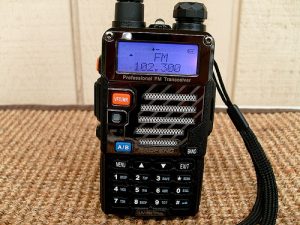
The BAOFENG BF-F8HP is a popular handheld transceiver that has gained traction among amateur radio enthusiasts and outdoor adventurers. Building on the legacy of its predecessor, the UV-5R, the BF-F8HP offers several enhancements that make it a compelling choice for both newcomers and seasoned operators. In this review, we’ll compare the two models, focusing on key features, performance, and usability.
Design and Build Quality
Both the BF-F8HP and the UV-5R sport a compact design that makes them easy to handle. However, the BF-F8HP features a more robust construction. The newer model has a slightly larger and more ergonomic body, providing a better grip during extended use. The buttons are well-placed and have a more tactile feel, which is beneficial in field conditions where you might be wearing gloves.
Power Output
One of the standout improvements in the BF-F8HP is its increased power output. While the UV-5R typically offers 1-4 watts, the BF-F8HP boasts a maximum output of 8 watts. This significant boost enhances its range and signal clarity, making it an ideal choice for users in remote areas or for those who need reliable communication over longer distances.
Battery Life
Both models utilize a similar battery setup, but the BF-F8HP comes with a higher-capacity battery. The 2000mAh battery not only increases talk time but also ensures better performance during prolonged usage. Users have reported that the BF-F8HP can last longer on a single charge, making it more dependable for extended outdoor adventures or emergency preparedness.
Frequency Range and Features
Both radios operate in the VHF (136-174 MHz) and UHF (400-520 MHz) bands, but the BF-F8HP comes with a more advanced programming feature set. The newer model supports additional channels, allowing for up to 1000 programmable memory channels compared to the UV-5R’s 128. It also includes dual watch capability, enabling users to monitor two frequencies simultaneously—an invaluable feature for emergency responders and hobbyists alike.
Audio Quality
In terms of audio performance, the BF-F8HP has improved speaker output, providing clearer audio and better volume control. Users have noted that the audio is less distorted at higher volumes compared to the UV-5R, making it easier to hear communications even in noisy environments.
User Interface and Programming
Both radios have a similar interface, but the BF-F8HP has streamlined features that make it easier to use. The new model has a more intuitive menu structure and improved LCD display, which is brighter and more legible in various lighting conditions. Additionally, while both radios can be programmed via software, the BF-F8HP’s firmware updates and programming software offer enhanced compatibility with a wider range of operating systems, making it more user-friendly for tech-savvy individuals.
Price Point
The BF-F8HP is slightly more expensive than the UV-5R, but given the enhancements in power, battery life, and features, many users find it to be a worthy investment. While the UV-5R remains a budget-friendly option, the BF-F8HP provides excellent value for those who need improved performance and reliability.
Conclusion
In summary, the BAOFENG BF-F8HP is a notable upgrade from the UV-5R, offering better power output, improved battery life, and enhanced features that cater to a range of users, from amateur radio operators to outdoor enthusiasts. While the UV-5R remains a solid choice for beginners, the BF-F8HP stands out as a versatile tool for those who demand more from their handheld transceiver. If you’re looking for a reliable, feature-rich radio that can handle various environments and situations, the BF-F8HP is well worth considering.

No comments:
Post a Comment